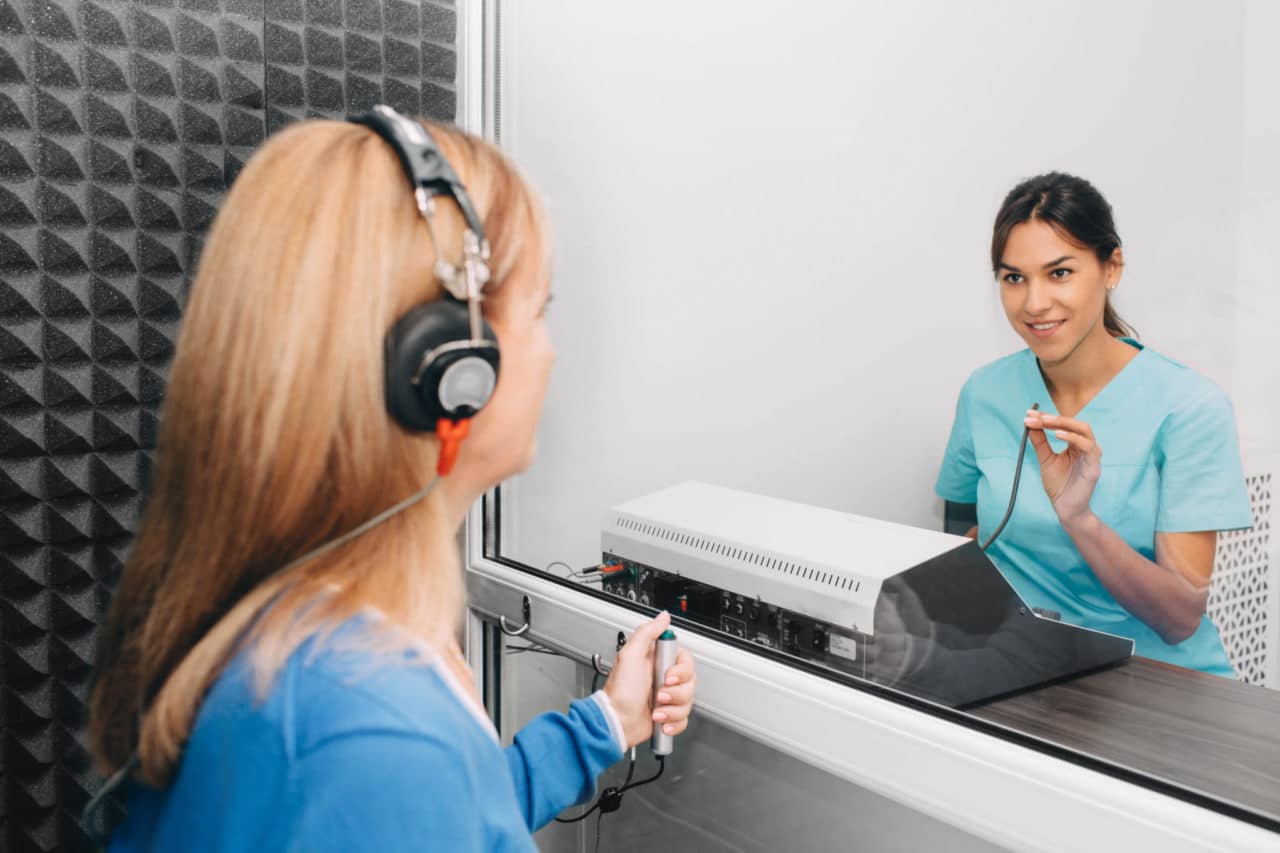Audiology evaluations consist of a series of tests used to determine whether a hearing loss exists and, if so, measure its type, degree and configuration. An audiologist will assess the results of each individual test in order to develop a treatment plan geared toward your unique hearing loss.
Who Should Be Given an Audiology Evaluation?

An audiology (or hearing) evaluation can benefit patients of all ages, even those who do not exhibit signs of hearing loss.
Hearing loss is a progressive condition that often develops slowly. Many people are not aware of a change in their hearing because they gradually adapt to the subtle changes in their hearing ability over time. Studies indicate that it takes an average of seven years for a hearing-impaired individual to seek treatment.
An audiology evaluation should be the first course of action for anybody who even suspects a hearing loss. The sooner a diagnosis of hearing loss is made, the more successful treatment will be. Early detection means more options for the patient.
Many physicians urge making audiology evaluations a routine part of your overall health care, much like regular vision exams and dental checkups. They are quick, painless and provide immediate results.
What Does Diagnostic Testing Entail?
A comprehensive audiology evaluation consists of a series of individual diagnostic tests that measure different aspects of your hearing. Following a physical examination and a review of your medical history, you will be given most if not all of the following tests:
Pure tone Testing
Pure tone testing (also known as pure tone audiometry) uses pure sine waves to measure the sensitivity of each ear to different pitches. The tested pitches typically range from 250 to 8000 Hz. While you are wearing specially calibrated earphones, you will be asked to identify when you hear specific pure tones by raising a hand, pressing a button or responding verbally.
The results are charted on an audiogram, a graph that shows the type, degree and configuration of your hearing loss by plotting pitch (frequency) and loudness (intensity). The graph is useful for quickly visualizing the results.
Bone Conduction Testing
Bone conduction testing is another type of pure tone test that measures your inner ear’s response to sound. A difference between bone conduction results and the results obtained with the earphones indicates that sound is being dampened as is passes through the outer or middle ear, before it reaches the inner ear.
Instead of sending the tones through the ear, this type of testing is able to bypass the outer and middle ear and send the tone directly to the inner ear. A small vibrator is placed behind the ear. The device sends out a vibration that passes through the skull bone to reach the inner ear.
Speech Testing
The pure tone audiogram contains information which is critical for identifying hearing loss, but it doesn’t say much about how well a person can understand speech in different conditions. Speech (or word recognition) testing is used to confirm the diagnosis and help rule out serious disorders of the auditory nerve and parts of the brain that process speech. Speech testing may be administered with either a quiet or noisy background; results are recorded next to the audiogram for easy visual reference.
Tympanometry
Tympanometry is a test of the middle ear used to detect fluid, wax buildup, eardrum perforations and tumors. It measures movement of the eardrum in response to air pressure; the results are recorded on a chart called a tympanogram.
Acoustic Reflex Testing
The acoustic reflex test measures involuntary muscle contractions of the middle ear, and is used to verify that the auditory and facial nerves are functioning well. It can also help to diagnose some specific causes of hearing loss.
Otoacoustic Emissions (OAEs)
Otoacoustic emissions (OAEs) are sounds generated by vibrations of the hair cells in the cochlea of the inner ear. OAE testing utilizes a tiny probe fitted with a microphone and speaker that is used to stimulate the cochlea and measure its response. Individuals with normal hearing will produce emissions; when a hearing loss exceeds 25-30 decibels, OAEs will gradually become undetectable.
This test helps determine whether there is a blockage in the ear canal, excess fluid in the middle ear or damage to the hair cells of the cochlea. OAE testing is often included in newborn hearing screening programs.
Auditory Brainstem Response (ABR)
Auditory brainstem response testing is used with adults to detect disorders of the auditory nerve or brainstem. In newborns, it is used to estimate the softest sound levels the baby is able to hear.
In an ABR test, electrodes are attached to the forehead, scalp and earlobes and earphones are placed in the ears. Brainstem activity is measured in response to sounds of varying intensities. Because of the time involved in setting up the test, it is only performed when necessary based on results of the other tests listed above. It is done during a separately scheduled appointment.
The brainstem response can only be detected if overall brain activity is very low, so patients are reclined into a supine position and encouraged to try to fall asleep before the test starts. Caffeine and other stimulants should be avoided on the day of the test.
Call our office at (808) 262-6673 for more information or to schedule an appointment.